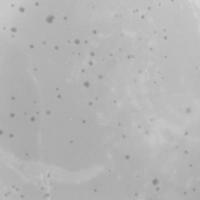Gordonia phage Joji
Add or modify phage thumbnail images to appear at the top of this page.
Know something about this phage that we don't? Modify its data.
| Detailed Information for Phage Joji | |
| Discovery Information | |
| Isolation Host | Gordonia terrae 3612 |
| Found By | Franchesca Inay |
| Year Found | 2018 |
| Location Found | Pittsburgh, PA USA |
| Finding Institution | University of Pittsburgh |
| Program | Science Education Alliance-Phage Hunters Advancing Genomics and Evolutionary Science |
| From enriched soil sample? | No |
| Isolation Temperature | 30°C |
| GPS Coordinates | 40.445602 N, 79.95314 W Map |
| Discovery Notes | The phage was found in a relatively dense, dry soil sample collected in front of the Cathedral of Learning in Pittsburgh, Pennsylvania (GPS coordinates were 40.445602N, 79.95314W. Varieties of small trees and plants were found along the perimeter of the collection area. The sample was collected on a warm, sunny morning at 9:32 A.M., and the temperature was 81 degrees Farenheit. The sample was transported to a storage location of a dark, dry locker inside the ground floor of the Cathedral of Learning after a seven minute transportation period, and was kept inside the locker at room temperature (~25 degrees Celsius) for 50 minutes before being taken into the laboratory for usage. |
| Naming Notes | The name for this phage was derived from the stage name of George Miller, an Australian-Japanese record producer and songwriter. He is the discoverer's favorite music artist; as such, she named a phage in his honor. |
| Sequencing Information | |
| Sequencing Complete? | No |
| Sequencing Facility | University of Pittsburgh Genomics and Proteomics Core Laboratories |
| Genome length (bp) | Unknown |
| Character of genome ends | Unknown |
| Fasta file available? | No |
| Characterization | |
| Cluster | Unclustered |
| Subcluster | -- |
| Lysogeny Notes | Since the plaques generated by phage Joji are clear, experimenters concluded that phage Joji is likely a lytic phage that replicates through the lytic cycle (which involves killing the bacterial host cell and leaving no residual bacteria left on the plate). |
| Annotating Institution | Unknown or unassigned |
| Annotation Status | Not sequenced |
| Plaque Notes | Plaques appeared to be entirely clear and circular in shape; additionally, the plaques were relatively small, ranging from 0.5 to 2 mm in diameter. |
| Morphotype | Siphoviridae |
| Has been Phamerated? | No |
| Publication Info | |
| Uploaded to GenBank? | No |
| GenBank Accession | None yet |
| Refseq Number | None yet |
| Archiving Info | |
| Archiving status | Archived |
| Pitt Freezer Box# | 90 |
| Pitt Freezer Box Grid# | D2 |
| Available Files | |
| Plaque Picture | Download |
| EM Picture | Download |
